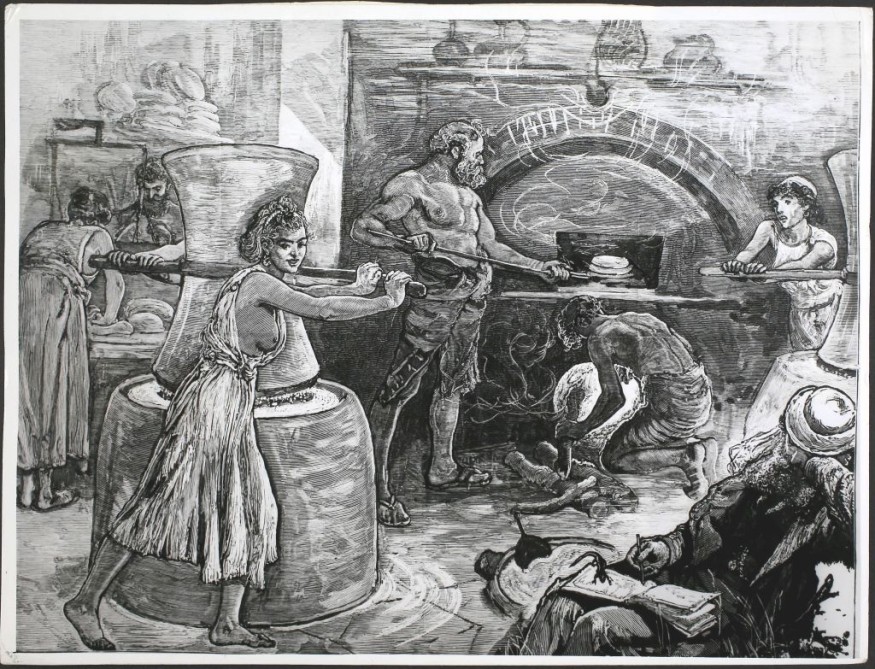
Archaeologists in the ancient Roman city of Pompeii have discovered a "bakery prison" where slaves and donkeys were used to crush the grain needed to produce bread.
Slavery
The bakery was found in a home as part of a larger project in the Regio IX area of the Pompeii archaeological park in southern Italy.
It provides further information about the everyday lives of the slaves in Pompeii, who are frequently neglected in histories of the ancient city.
According to a statement from the archeological park, indentations in the floor were also found, which suggested how the animals moved as they were made to walk around for hours while wearing blindfolds.
A small room with iron-barred windows high in the wall and no view of the outside world was also discovered during the excavations.
The bakery was a part of the working quarters of a huge home with well-preserved paintings.
The house was split into a residential part "decorated with exquisite Fourth Style frescoes" and a "productive quarter," which included the bakery, on the 44-hectare site that is currently being excavated.
In one of the bakery's rooms, three skeletons were found, indicating that the home was formerly occupied.
Read Also : Scientists Unearth Legendary 14,000-Year-Old Village in Canada That Could Rewrite North American History
Shocking Side Of Ancient Slavery
Pompeii director Gabriel Zuchtreigel describes the discovery as the "shocking side of ancient slavery."
"The one devoid of both trusting relationships and promises of manumission, where we were reduced to brute violence, an impression that is entirely confirmed by the securing of the few windows with iron bars," he added.
Archaeologists discovered in August a modest bedroom in a Roman home close to Pompeii, which provided insight into the living conditions of slaves in antiquity.
In an effort to reverse years of deterioration and neglect, the site has seen a surge in archeological activity recently.
More proof of this hard everyday existence is available to the public at the "The Other Pompeii: Ordinary Lives in the Shadow of Vesuvius" exhibition, which opens on December 15 at the Palestra Grande in Pompeii.
"(The exhibition is) dedicated to that myriad of individuals often forgotten by the historical sources, such as the slaves, who constituted the majority of the population and whose labour contributed in an important way not only to the economy, but also to the culture and social fabric of Roman civilization," the Pompeii authorities said.
When Mount Vesuvius erupted in AD 79, burying Pompeii and the surrounding countryside in volcanic ash, thousands of Romans, unaware that they were living beneath one of the largest volcanoes in Europe, perished.
The city was covered in a heavy coating of ash by the eruption, although many of its citizens and structures were spared.
The rock and ash formed eerie forms around the curled-up corpses of the disaster's victims, estimated to be 3,000 in number, and helped preserve several buildings nearly to their original state.
After Rome's Colosseum, Pompeii is Italy's most popular tourist destination.
Related Article : Historic Discovery: Archaeologists Unearth Secret Ancient Egyptian City and Cemetery
© 2025 NatureWorldNews.com All rights reserved. Do not reproduce without permission.





